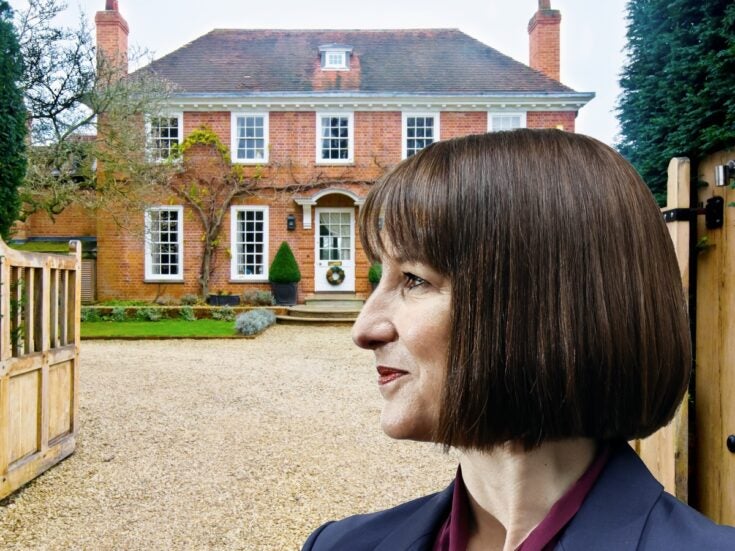Shall I Carve? In an era sadly lacking in skilled craftsmen, Colin Mantripp is a polished masterpiece. Christopher Silvester meets a woodcarver in demand
Shall I Carve?
In an era sadly lacking in skilled craftsmen, Colin Mantripp is a polished masterpiece. Christopher Silvester meets a woodcarver in demand
AT PRIMARY SCHOOL, Colin Mantripp couldn’t wait for his classes to end so that he could rush home and continue making things out of orange boxes. He has the same enthusiasm for making things today. ‘I’ve never, ever lost the excitement of it all,’ he says. The only difference is that today he owns and runs the Lillyfee Woodcarving and Design Studio near High Wycombe, which employs around a dozen people and over the past eighteen months has exported its unique manufactures to five continents.
Whether he is working for a livery company, a church, a rock star or a billionaire businessman such as Roman Abramovich, Mantripp brings to each task the same passionate intensity of vision and the same dogged attention to detail. ‘It’s all by word of mouth. If you’re good at what you do you shouldn’t need to advertise. That’s been my philosophy all the way through. I think the most important thing is to enjoy doing what you do.’
Mantripp was brought up in the High Wycombe area in the Fifties and Sixties, when it was a world centre of excellence in the craft of furniture-making. He can remember furniture exhibitions in London at which High Wycombe had its own space alongside those of entire countries and of equal size to theirs.
Mantripp’s grandfather was a well-known woodcarver at one of these furniture companies. His father was a hairdresser, but his family on his mother’s side were involved in various arts and crafts as landscape painters, costume designers and architects, while his grandmother on his father’s side, who came from Paris, was related to Rodin.
At school he excelled at woodwork, metalwork and pottery. ‘I remember the art teacher saying to me that I could do more in one lesson than anyone else in the class could do in a term,’ he says. ‘I worked in the school breaks and lunch hours, making pots… just loved it. They gave me the keys to the rooms and I used them as my studio.’

He went to a furniture factory for weekly experience in the hope of doing some woodcarving, only to find that they sent out all their woodcarving to some retirees. ‘I was just labouring there, but I said to the workshop manager that I’d come to do woodcarving. He pointed to some woodcarving tools and told me what work they needed doing, which was carving some water leaves on the backs of chairs. Much to their amazement, I did it. If it had gone wrong it would have been a disaster. But my grandfather was a woodcarver and I’d been brought up with it from the time when I was a little boy. Sitting around the dinner table, we often talked about woodcarving.’
MANTRIPP WORKED FOR his grandfather’s company, Frank Hudson & Sons, for six and a half years, starting his four-year apprenticeship in 1973. He never went to college. ‘When I said to my grandfather I wanted to go to college, he said, “If I was a tutor at the college do you think you’d learn anything?” I said yes. “Well, imagine that you’re at college.”
Whenever I asked anybody a question and they told me anything, I listened intently and made sure I got it right the first time. I also read a lot of books, took the trouble and time to learn the different styles of furniture, looked into the work of different artists, and went to museums to see things. When we had a problem at work, I’d look it up in my spare time. Nobody else did. They used to call me “The Enigma”. My other nickname was “Scooter”, because I was really keen and always running around.’
He also supervised the other apprentices in writing up their workbooks, again in his own time. This gave him an excuse to go into the polishing shop, the cabinet-making shop, the upholstery shop and the machining shop. ‘It was hugely beneficial to me. Later on, when I ran my own studio, I could do machining, I could do upholstery, I understood polishing and I knew all the different woods.’
In 1979 he went on a year-long grand tour of Europe on his motorbike, visiting Holland, the South of France, Naples, Florence, Corfu and Athens, ending up in Crete, where he met the expatriate British artist John Craxton. ‘While I was in Crete I got a parking ticket, and in those days the police would confiscate your number plate until you paid the fine. John took me to a place where we bought a piece of metal, which we fashioned and painted to be an exact replica of my number plate.

‘I got to know John very well, stayed at his house for six months. I got a job with a Cretan woodcarver doing Byzantine work. He did a lot of work in America and in different places for the Greek Orthodox Church. I was the only one in the company, out of about twenty people, who could write in European script and nobody spoke any English, so I was learning to speak Greek and I could translate from Greek script into European. I used to write all the cheques. I worked hard, but I loved it.’
WHEN HE RETURNED to England, he found that his grandfather was upset with him for having stayed away so long, so rather than go back to working at his factory Mantripp started up in competition. He worked seven days a week, twenty hours a day. Fortunately, Craxton had given him a lot of introductions.
But then he experienced an even greater stroke of luck. Lord Burnham owned a beautiful old lodge house in Beaconsfield with exterior carvings. Mantripp drove over to see it one day and was examining the carvings when Lord Burnham himself drove up, and a couple of hours later he was sitting in his lordship’s library, with a large scotch in his hand, being given a job of his own devising.
‘We agreed on a low figure for me to do the restoration, which was beneficial to me because he said I could have my own studio, rent-free, in his carpentry workshop. I worked twenty hours a week for him and did my own things the rest of the time. I had low overheads, but I was working like a devil just to keep on top of everything, using other woodcarvers and cabinet-makers. It pushed me on design, thinking outside the box, getting over problems.’
He worked for Lord Burnham for six years, totally restored the lodge and did other projects for him, and when all the work was finished he started paying rent to use the workshop. When Lord Burnham decided to sell the marshal’s yard where the workshop was located, he offered Mantripp part of a barn complex at Lillyfee.
He decided to rent the entire complex on the understanding that he could sublet various parts of it to an interior designer. He took on three people and Lillyfee got off to a flying start when Mantripp was asked to restore a Hindu temple pavilion that had been in the garden of an old British Raj hand for many years before ending up in an architectural salvage yard.
It was destined for a customer in Long Island and the job was priced at £40,000. ‘Suddenly I had eight people working for me. At end of the project, we had some machinery, power tools, racks and the whole workshop was equipped.’
Pop and rock stars proved a steady source of custom. Lillyfee received a major commission from Spice Girl Melanie Brown (aka Mel B or Scary Spice), who had just bought the manor house at Little Marlow. And when Mick Jagger bought the house next door to his existing residence in Ham, near Richmond, Lillyfee designed and made the overdoors, the door cases, the doors themselves and the panel work needed to join the two houses into one.

Following on from that, Lillyfee did a lot of work for Elton John at Crimp Hill in Windsor. ‘Elton converted his orangery. It had a shrine to his nan in there like a church. It had a great big French salon with beautiful carved doors. And we did some William Kent tables with cherubs sitting underneath them in conch shells, and huge mirror frames, eight foot tall, all of them gilded with 24-carat gold leaf. I designed a ceiling for him as well. We had such a lot of fun working there.’
LILLYFEE NOW HAS the optimum setup: a dozen staff and no shortage of work despite the continuing low-growth economic environment. There was a time when Mantripp had as many as 25 people working for him, but he found the numbers too unwieldy. ‘I hoped that I could become a much bigger company and take on bigger and more exciting projects. But I was never satisfied with the work that was going out the door. I was losing control over it.
‘We hire young people and we’ve usually got two apprentices at any one time. Over the past twenty years about 120 different people have worked at Lillyfee. There’s a core of people who’ve been there since the early days, but there’s always been a certain amount of turnover. I think that’s quite healthy. And I don’t mind people leaving.
‘When I look around at all the companies there’s hardly any competition at our level in the London area,’ he insists. ‘Whatever we do, we guarantee success. If people don’t like it, we put it right for them, as they see it. Some of the customers we’ve found to be the most difficult to start with are the ones who are still with us.’
Read more from Christopher Silvester
Don’t miss out on the best of Spear’s articles – sign up to the Spear’s weekly newsletter






